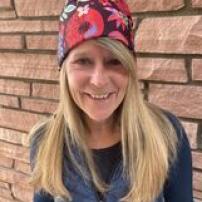
My first and only spiritual path prior to the Diamond Approach was running and hiking very long distances. I began to notice that, after periods of intense efforting and pushing, the striver in me would eventually exhaust herself. In that surrender something quite magical would open up. I would begin to feel light, open hearted, supported by the universe and immersed in a kind of loving unity with...everything. For a long time I equated those glimpses of true nature with extreme physical challenge. In 2002 a different portal began to open up. I was tapering for a race in Hong Kong and looking for a good read. I bought one of two English language books at the store next to my hotel: Personality Types: Using the Enneagram for Self-Discovery by Don Riso and Russ Hudson. The led me to Sandra Maitre's The Spirituality of the Enneagram, a treasure trove of books by A.H. Almaas (aka. Hameed Ali) and, ultimately, to the Ridhwan Center in my hometown of Boulder, CO. Over the ensuing years my love of adventure and search for reality's deeper nature shifted from mountain trails, rivers and deserts to the equally wondrous, frequently treacherous, always revelatory inner landscape. Over time even the distinction between self and adventure began to dissolve into the dynamic expression of the Logos itself. The Diamond Approach was, and continues to be, my personal guide to the mysterious and unexpected beauty of life's terrain and the truth of the self. Life, it turns out, even in its most ordinary expression, can be an infinitely creative journey of discovery and transformation -- sometimes painful, even terrifying, often blissful and expansive -- but always leading us deeper, always leading us home.
I have learned the simple, but definitely not easy, capacity to be myself -- to show up just as I am. And, the first and most important step in that process was, and continues to be, getting space from the inner critic. The soul needs this freedom, along with open, agendaless curiosity, to begin to reveal her depths.
I am trained as a bodyworker and biodynamic cranial sacral therapist. My work is trauma informed, with a particular sensitivity to the somatic underpinnings of our deepest and earliest psychic structures.
The Diamond Approach is not a religion, though all belief systems are welcome. There are teachings and a methodology but no doctrine. The guidance, always, is to find out for yourself what is true, through open ended inquiry into your direct experience.
Events with Stephanie
Book Study & Inquiry Group: The Unfolding Now by A.H. Almaas
2025-09-24 18:00
Location: BOULDER, CO, United States
Book Study & Inquiry Group: The Unfolding Now by A.H. Almaas
2025-10-01 18:00
Location: BOULDER, CO, United States
Book Study & Inquiry Group: The Unfolding Now by A.H. Almaas
2025-10-08 18:00
Location: BOULDER, CO, United States

